A good quality Japan travel guide book is one of the best investments you can make for your trip to Japan!
It can save you time and money and you will be much more knowledgeable about how to plan your perfect trip.
The last thing you want to do is to get lazy with your choice of a guide book or to try to save some money and borrow an old guide book from your friend. The time and money you thought you saved, will be wasted the moment you find out the museum or restaurant the guide book recommended is closed or the market you were looking forward to all trip has moved to a different location.
Here is everything you need to know about why you should get a physical travel guide book and what to look for before buying one.
Why Trust Me?
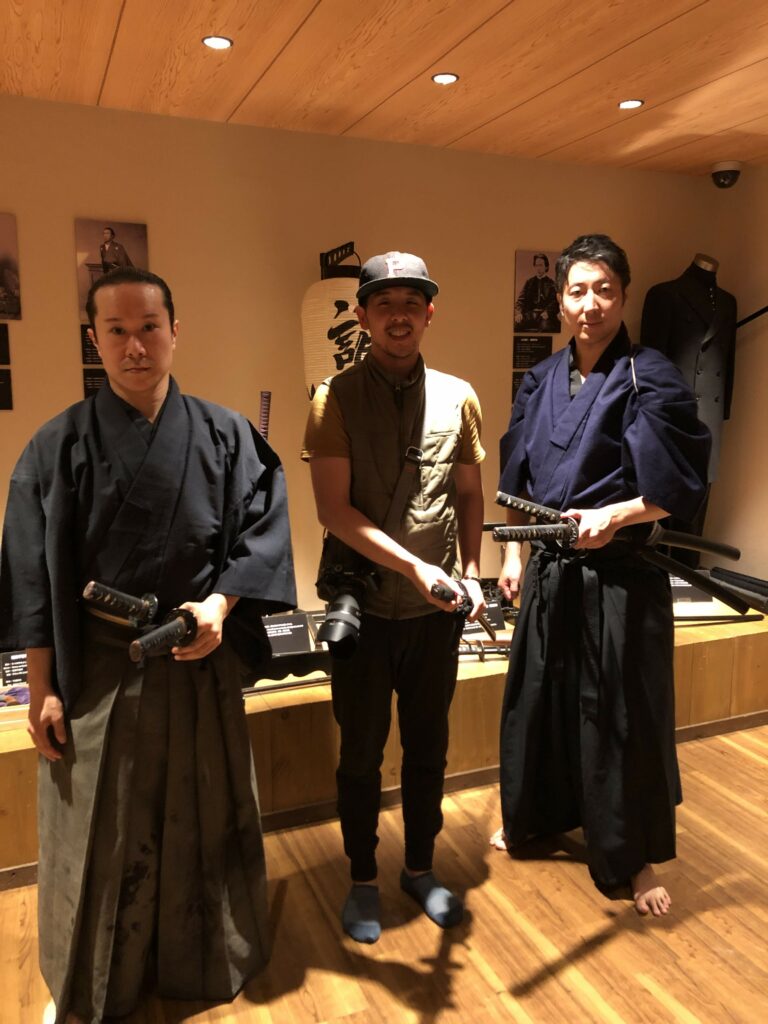
As with all of the Ultimate Guides I create, I have poured countless hours of research into this article to make sure you have all the information you need to make the best decision.
In my opinion, to truly understand what makes a useful guidebook for Japan, you need to have visited Japan on multiple occasions.
I’ve been a professional filmmaker and photographer since 2018 and have been lucky enough to travel to Japan many times for both projects and for fun. On my most recent trip, I traveled from Kyoto all the way to the northern Sendai area over the course of 3 weeks.
From these experiences traveling throughout Japan, I think I’m in a good position to help you find the perfect guidebook for your trip.
Most importantly, I’m just a message away. So, if you have any questions, just leave a comment below, email me at [email protected], or send me a DM on Instagram @tom.shu.
P.S. I answer every question that is sent 🙂
Reviews of the 10 Best Japan Travel Guide Books

After spending countless hours researching and pouring through each guide book I could get my hands on, here are my 10 favorite travel guide books for Japan. To make it easier for you, I have split the guide books into the following sections:
- Best guide book which focuses on the entire country of Japan.
- Best Tokyo guide books.
- Best budget guide books for traveling in Japan on the cheap.
As a heads up, I didn’t include any guide book that solely covers cities outside of Tokyo like Kyoto or Osaka. The reason I skipped these is that I think the Japan travel guides for the entire country cover these cities in good enough detail.
Plus, if you need more information than what the guide book covers, you can easily find it online.
Best Guide Books for the Entire Country of Japan

1. Lonely Planet Japan Travel Guide

This is one of the best guide books you can get if you’re visiting Japan for the first time or if you are still in the planning stages of your trip as it contains incredibly useful information about destinations throughout the entire country.
It could be especially useful if you haven’t quite nailed down where in Japan you want to go and want to gather as much information as possible before making a final decision.
What makes Japan so unique is that each region has its own distinct culture, atmosphere, and feel. With this guide, it’s easy to get a general idea of what each region is like and how to travel there. This will give you a better idea if it makes sense to visit on this trip or a future trip.

This guide book, like other Lonely Planet guide books, is organized into 4 distinct sections:
- Plan Your Trip: This section contains all the information you need to plan your trip. It includes information like Japan’s top 24 must-see sights, a selection of sample itineraries in different regions of Japan, newly opened things to do throughout Japan, local foods that you need to try, and much more.
- On the Road: This is the most useful section. It contains detailed information about each different city, region, and area in Japan. It includes information like sightseeing and activities, how to get there and get around once you’re there nightlife, where to stay, and much more.
- Understand: This section gives you more background information about Japan as a country, its people, and its culture. You will find information about Japan’s history, its arts, the sports that are played, and much more.
- Survival Guide: As you might have guessed, this section covers important and practical information that will help you as you travel to Japan. You will find information such as medical care, type of electric outlets, the climate, taxes and refunds, and much more.
PROS
- It gives you a great general overview of all the different cities and regions in Japan and what to expect.
- Written by an all-star team of Japan writers with many years of experience living and writing about the country.
- Regions at a glance feature allow you to get a quick general understanding of each region in Japan.
- Suggested itineraries to help you plan your trip for different destinations.
- More intuitive to use as a travel guide than National Geographic Traveler or DK Eyewitness.
- Downloadable maps if you purchase the ebook version
CONS
- The hard copy version is large and heavy to carry around, which is a trade-off of containing so much information.
- Most, if not all of the photos in the book are stock images.
- So information-dense that it can be hard to read for some.
2. National Geographic Traveler Japan 6th Edition

If you’re more of a visual learner this could be the perfect Japan guide book for you. As can be expected from National Geographic, this guide book contains truly incredible photography and very insightful historical information that is not found in other guide books.
Similar to the Lonely Planet Japan Travel Guide, this guide book covers the entire country of Japan.
The main difference between the two guide books is that the Lonely Planet guide book reads more like an encyclopedia with bullet points of things to do in each location versus National Geographic which reads more like a story of a given location.
If you have ever read an article in National Geographic Magazine, then you’ll know what I’m talking about.
My favorite part about the National Geographic guide book is the number of different cultural essays and stories that are found throughout the book.
One moment you’re checking out all the things to do in the Ginza district of Tokyo and a page turn later and you’re reading a first-hand experience of staying the night in a capsule hotel.
If you’re looking for an overall Japan travel guide book that contains the most information possible, go with the Lonely Planet Japan Travel Guide. However, if you’re looking for a deeper dive into the many stories about the culture of Japan, National Geographic Traveler is your best bet.
PROS
- Incredibly beautiful photos that are taken by a dedicated National Geographic photographer.
- Prepares you for Japan with an in-depth section about the history and culture of Japan.
- Insightful cultural stories about each destination that you won’t find in any other guide books.
- Useful call-out boxes containing information such as insider tips, need to know information, and snippets of historical information.
CONS
- It doesn’t have as much detailed information as the Lonely Planet Japan Travel Guide.
- It doesn’t cover as many specific locations as the Lonely Planet Japan Travel Guide.
- Only written by two authors so you don’t get as much breadth in the understanding of different regions as the Lonely Planet Travel Guide.
- Lack of suggested sample itineraries.
3. DK Eyewitness Travel Guide Japan

DK Eyewitness is known for creating guide books with incredibly beautiful visuals and their Japan travel guide book does not disappoint! Similar to the National Geographic Traveler Japan guide book, this guide book from DK Eyewitness is a visual feast for your eyes.
You’ll find color photographs and street maps that span multiple pages, secondary images that show you what different attractions look like, and even hand-drawn illustrations of temples, castles, shrines, and museums to give you an idea of what to expect when you visit.

Content-wise, the formatting of the book is a mixture between the Lonely Planet and National Geographic travel guide.
Similar to the National Geographic travel guide, DK Eyewitness starts with a large section introducing you to the culture and history of Japan. Then there is a sizable section about Tokyo, before getting into the other regions of Japan.
Once you get to the meat of the book and into each specific destination, the information is given to you in more of a glossary style format like the Lonely Planet travel guide book instead of an editorial style like National Geographic.
The downside with all this visual imagery is that the book does not have as much detailed information as the Lonely Planet Japan Travel Guide. With that said, if visuals are important for you, this book is one of the best.
PROS
- Incredibly beautiful photographs, maps, and hand-drawn illustrations allow you to visualize each location.
- Prepares you for Japan with an in-depth section about the history and culture of Japan.
- Thoughtful easy to follow itineraries to help you plan your trip in more detail.
CONS
- It doesn’t have as much detailed information as the Lonely Planet Japan Travel Guide.
- It doesn’t cover as many specific locations as the Lonely Planet Japan Travel Guide.
4. Cool Japan Guide: Fun in the Land of Manga, Lucky Cats and Ramen

Now that we’ve gone over the serious travel guides which cover the entire country of Japan, we can get into something more fun!
Fun in the Land of Manga, Lucky Cats, and Ramen is a Japan travel guide made in the style of a comic book, which gives you a first-hand experience of Japan from the cartoonist’s point of view.
The illustrations in this travel guide are extremely charming and it contains a surprising amount of useful practical information about the intricacies of Japanese culture that you don’t find in standard travel guides.

The main purpose of this travel guide isn’t specifically for planning your trip in detail, but for cultural adjustment.
As a person who has traveled to Japan multiple times, I can honestly say that many of my experiences as a westerner visiting Japan for the first time were covered in this guide book. I mean what other travel guide books go over the unique bathroom experience only found in Japan!
If this is your first time visiting Japan, this is a great introduction to the cultural intricacies of the country. Of course, if you want more in-depth information, go with Lonely Planet, DK Eyewitness, or National Geographic.
PROS
- A very good introduction and perspective of what to expect when you travel to Japan as a westerner for the first time. It covers many subtle cultural intricacies that are not covered in standard guide books.
- Incredibly charming illustrations and stories make for an easy and fun read.
- It contains useful and practical information that you will run into during your daily wanderings through Japan.
- It’s under $10 so makes for a great addition to a more standard travel guide book.
CONS
- Not a good travel guide book for in-depth travel information. If this is what you’re looking for it might not be the best fit for you.
- It’s written in the style of a comic book, so it might not be a good fit for every traveler.
- Published in 2015, so some information could be out of date.
Best Tokyo Guide Books

5. DK Eyewitness Top 10 Tokyo (Pocket Travel Guide)

Tokyo is huge! You could literally spend your entire trip to this super city and still not be able to see everything. With so many things to do, sights to explore, and foods to eat, it can sometimes be hard to decide on how exactly you want to spend time in Tokyo.
That is the reason why I love this Pocket Travel Guide from DK Eyewitness. As the name suggests, you will find super detailed top 10 lists of what you HAVE TO DO in Tokyo. What makes this book so special is that it breaks down its top 10 lists into sub top 10 lists for each location it recommends.

Here is what I mean. In the guide book’s “top 10 sights for first-time visitors”, Senso-Ji Temple is listed as number 2 in the list. Then, the guide book breaks down Senso-Ji Temple into the top 10 things to see once you’re at the temple.
I like this feature because it gives you enough information to figure out what you want to do, but it doesn’t overwhelm you with information like some other guide books do.
Other than the must-see sights, the top 10 lists also cover many other aspects of Tokyo including cafes and bars, restaurants, art galleries, night clubs, and even free things to do. Like the other DK Eyewitness travel guide books, it also includes sample itineraries, beautiful photos, and pull out maps in full color.
PROS
- Very detailed and thoughtfully curated top 10 lists of main attractions and “off the beaten path” activities in Tokyo.
- Still has the beautiful photographs and color maps that DK Eyewitness travel guide books are known for, just in a smaller form.
- It makes it very easy and quick to plan and decide on what to do in Tokyo or what to do once you get to a specific attraction.
- The paperback version is usually under $10.
- Compact and easy to carry around.
CONS
- Not as detailed as other Tokyo guide books. For example, this guide book does not have subway information which is one of the best but confusing ways to travel around Tokyo.
- Additionally, the guide book does not tell you how to get to the locations it recommends.
- Not the best resource if you will be visiting Tokyo for a longer duration of time.
6. DK Eyewitness Tokyo Travel Guide

If you like what you have seen so far about DK Eyewitness travel guide books and you know you will need a more in-depth travel guide about Tokyo then this might be the one for you!
Like the other DK Eyewitness guide books, you get incredibly beautiful pictures, color maps that span multiple pages, and hand-drawn illustrations of temples, castles, shrines, and museums to give you an idea of what to expect when you visit.
The layout is also the same as the DK Eyewitness Japan Travel Guide. It starts with an introductory section about Tokyo, then dives into the different areas of Tokyo before ending with a “Need to Know” section.
If you’re thinking about getting the DK Eyewitness Travel Guide Japan, then skip this book as there is a lot of duplicate content. The main difference is that there is a section dedicated to day trips outside of Tokyo, but you can always find day trip recommendations outside of Tokyo online.
PROS
- Incredibly beautiful photographs, maps, and hand-drawn illustrations really allow you to visualize each location in Tokyo.
- The “Off the Beaten Path” section is very well done. Having been to Tokyo many times, I can honestly say that I had not heard of many of these places before reading this guide book.
- It gives a great overview of different self-guided walking tours you can do throughout Tokyo.
CONS
- It is not as information-dense as the Lonely Planet Tokyo Travel Guide.
- If you already have or are planning to get the DK Eyewitness Japan Travel Guide then skip this guide book as there is a lot of duplicate content.
7. Tokyo Maze – 42 Walks in and Around the Japanese Capital

Tokyo is one of the best walking destinations in the world, so if your style of travel is to do it all on foot, this guide book might be the perfect primary or secondary guide book for your trip.
Tokyo Maze is one of the more unique Tokyo guide books as it specifically focuses on walking tours in and around the city. The author of the book has been visiting Japan for over 25 years and lived in Tokyo for 5 years, so he knows the ins and outs of walking around this city.
In the guide book, you’ll find 42 different walking tours that thoughtfully begin and ends at a railway or subway station, making these walking tours that much more enjoyable! He also included his top 10 tips for a variety of different destinations such as shopping streets, boutiques, museums, temples, where to eat, and much more.

Having been to Tokyo many times before, I was surprised to find so many unique neighborhoods in addition to the main tourist spots covered in the book.
My favorite part is that each walking tour has his favorite spots to hit up for coffee breaks and lunch along the route. It’s almost like traveling with your own tour guide in your pocket!
The downside is that the visuals in this book are lackluster. There are only a couple of photographs provided for each walking tour and the maps are black and white and not very detailed.
PROS
- A unique Tokyo guide book featuring 42 different walking tours that take you to neighborhoods and attractions not usually covered in standard guide books.
- A coffee break and lunch suggestion on each walking tour route is a nice touch.
- Each walking tour starts and ends at a train station or subway (many on the main Yamanote Line) which makes getting to the walking tour incredibly easy to do. As a bonus, you’ll also get acclimated to how the subway line works in Tokyo.
- The walks are organized into different categories such as history, photography, museum lovers, foodies, etc., which makes choosing a walk easier.
CONS
- The photographs and black and white maps are lackluster especially compared to the DK Eyewitness guide books.
- It’s definitely not as detailed as the DK Eyewitness or Lonely Planet travel guide books, so if you are looking for in-depth coverage, this might not be the right book for you.
8. Lonely Planet Tokyo (City Guide)

Since we covered the Lonely Planet Japan travel guide, I thought it would be a good idea to go over the Lonely Planet’s city guide to Tokyo. Like their Japan guide book, the Lonely Planet Tokyo City Guide gives you an incredible amount of information in an intuitively laid out format.
The order of the information is kept the same as the full Japan travel guide book with just minor changes for Tokyo. So this is what you’ll find in the Tokyo specific guide book.
- Plan Your Trip: Information to help you plan your trip including photos, the top 16 things to do in Tokyo, what’s new in Tokyo, top itineraries, and much more.
- Explore: This is the most useful section and contains top sights, foodie destinations, entertainment, nightlife, shopping, and much more for each neighborhood in Tokyo.
- Understand: This section gives you more background information about Tokyo’s history, pop culture, its art scene, and much more to help you understand the city before getting there.
- Survival Guide: As you might have guessed, this section covers important and practical information. Most importantly, it contains information on how to best get around Tokyo.
Similar to the DK Eyewitness Tokyo guide book, there is a lot of duplicate information between this book and the Lonely Planet Japan Travel Guide. So, if you already have the Japan guide book or are thinking of picking it up, you can probably skip this one.
PROS
- It contains the most in-depth information out of the Tokyo travel guide books that we covered.
- More intuitive to use as a travel guide to quickly scan and find sights to visit than DK Eyewitness.
- Covers all the most popular tourist sights and neighborhoods in Tokyo very well and provides breakdowns with thorough information.
CONS
- It does have full-color maps and images throughout the book, however, the ones found in the DK Eyewitness books are better.
- There is duplicate content with the Lonely Planet Japan Travel Guide, so if you are planning on picking up that book, you can skip this one.
- It does not contain as many “off the beaten path” attractions as the Tokyo Maze guide book.
Best Budget Japan Guide Books

9. Super Cheap Japan: Budget Travel in Tokyo, Kyoto, Osaka, Nara, Hiroshima, and Surrounding Areas

Traveling on the cheap versus with even a mid-range budget changes the way you travel, especially in Japan. It takes a lot of planning, but surprisingly, traveling on a budget in Japan is easy to do.
Yes, you can find the same information online, but what makes this book special is that it consolidates all the information for you in an easy to carry guide book.
The Super Cheap Guides series are some of the best guide books dedicated to traveling on a very limited budget.
As the name suggests, the main cities this guide book covers include Tokyo and its surrounding area, Kyoto, Nara, Osaka, and Hiroshima. It also provides some information on other places to see around these cities like Himeji, Hakone, Miyajima, and Fushimi Inari which is nice to have.
In the guide book, everything is catered around saving as much money as possible. It recommends the cheapest transportation options, free places to go, and the most budget-friendly food options in each area it covers.
Having been to Japan many times, I think the best part about this book is the food recommendations and transportation information.
Transportation is by far the most expensive aspect of traveling through Japan, so if you can get it right, you can save a lot of money. The restaurants it recommends are the obvious cheap choices to go for, but if this is your first time visiting Japan, Super Cheap Tokyo will save you a good amount of time in researching.
PROS
- One of the only Japan guide books that are solely focused on traveling on a budget.
- Includes budget-friendly food options for most of the places it covers which will save you time in researching.
- It has a useful map legend system for each area it covers which makes it easy to find 100 yen stores, cheap supermarkets, and budget accommodations.
CONS
- It is a bit outdated as the guide book was published in 2017.
- The food recommendations are mostly just popular cheap places to eat in Japan. So, if you have already been to Japan before and are looking for more unique recommendations, you might be disappointed.
- It does not provide the most in-depth information when compared to the Lonely Planet, National Geographic Traveler, and DK Eyewitness guide books.
10. Super Cheap Tokyo: The Ultimate Travel Guide to Tokyo and the Kanto Region

If you know you will only be traveling to Tokyo and the surrounding areas like Mount Fuji and Kamakura, then this might be a better fit for you.
Super Cheap Tokyo is a shortened and more updated version of the Super Cheap Japan guide book and includes more detailed information about the different neighborhoods in Tokyo. For example, you will find information on Ikebukuro in North Tokyo or the Sky Tree and Ginza areas in East Tokyo which are not covered in the Super Cheap Japan guide book.
The features that made the Super Cheap Japan guide book so popular such as cheap food recommendations, lists of budget accommodations, and transportation options, as well as its map legend system, remain the same, just with a focus on Tokyo.
PROS
- One of the best Tokyo focused guide books for budget travelers.
- Includes budget-friendly food options for most of the neighborhoods it covers in Tokyo.
- Useful map legend system for each neighborhood that makes it easy to find 100 yen stores, cheap supermarkets, and budget accommodations.
CONS
- It is a bit outdated as the guide book was published in 2018.
- The food recommendations are mostly just popular cheap places to eat in Tokyo. So, if you have already been to Tokyo before and are looking for more unique recommendations, you might be disappointed.
- There is some overlap with the Super Cheap Japan guide book, so if you already have that book or are thinking about getting it, you should skip this guide book.
- It does not provide the most in-depth information when compared to the Lonely Planet, National Geographic Traveler, and DK Eyewitness guide books.
Why Should you Get a Physical Guide Book?
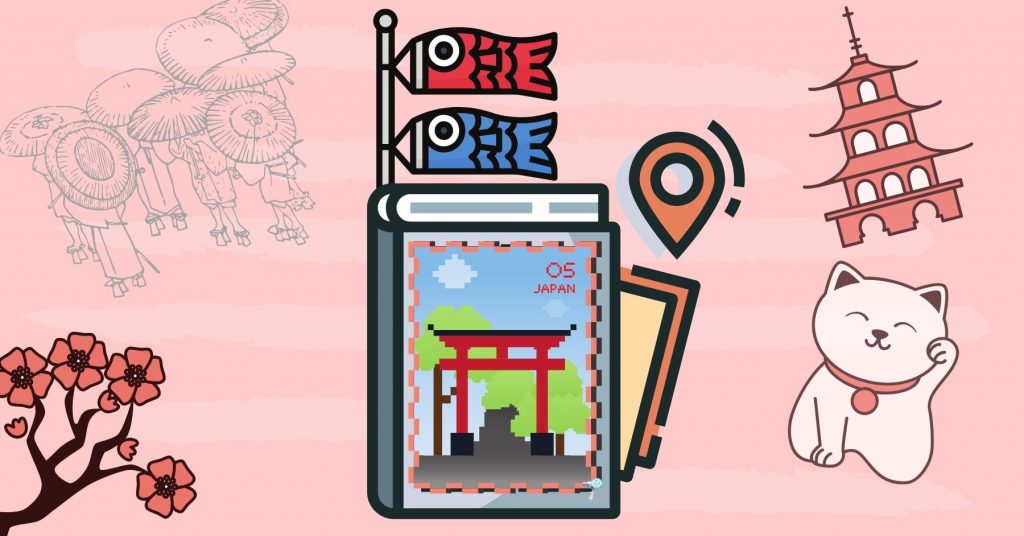
Even though we live in the age of smartphones and instant information, I still think there are many benefits of bringing along a hard copy guide book when you go to Japan.
Here are just a few reasons why I think you should go the physical book route versus only relying on digital information:
Internet Connection

You will never have to worry about having internet access to look up information. Although free WiFi is available all over Japan, there will still be times when you’re out exploring, and accessing the internet won’t be the most convenient thing to do.
Travel Sim Card Cost

Travel sim cards in Japan are not the cheapest. An 8-day travel sim card with unlimited data is usually around $40 and a 16-day is close to $60.
If you’re traveling through Japan for a long duration of time, the cost of a sim card can add up quickly. If you have a good quality guide book, you might be able to skip the travel sim card altogether.
Easy to Take Notes

One of the best parts about having a physical book is that you can mark it up, bookmark specific pages, and make it your own. There is honestly nothing better than whipping out your guide book and flipping instantly to that page you had bookmarked to find the information you’re looking for.
More Unique and Detailed Information
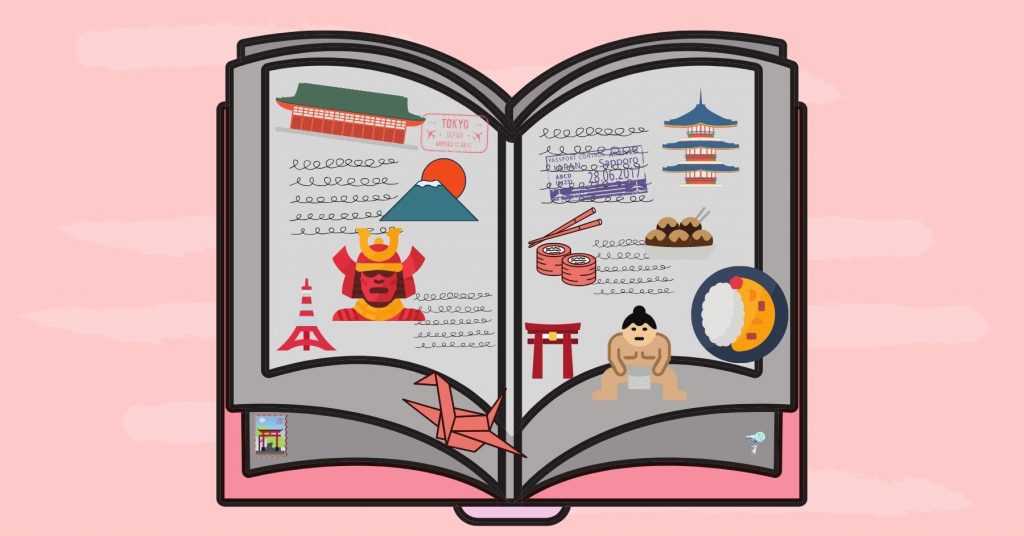
When you Google for information, you’re relying on Google’s algorithm to determine what information is most important. The downside is that many of the English websites that Google will return to your query contain the same information geared towards tourists.
The best travel guide books have been written by locals or by people with deep knowledge of the specific area of Japan. Because of this, you will likely find unique information that is not always on the first page of Google.
It Makes a Wonderful Souvenir

Travel is romantic. The new sights, sounds, and smells. Getting immersed in a new culture and experiencing things for the first time. It’s what keeps you going back for more.
What makes a better souvenir than the guide book that helped you along on your journey?
In my opinion, there is nothing more romantic and memorable than seeing your bookshelf filled with beaten up travel books that helped you on so many adventures.
How to Choose the Best Japan Travel Guide Book for You?

Not all travel guide books are created the same and each one is created for a different audience. Some Japan travel guide books are created specifically to help you travel through Japan on the cheap, others are geared solely on Tokyo and its surrounding area, and some give you more of a history lesson than others.
The key to having the best trip to Japan possible is to understand what type of trip you’re looking for and then to get the best guide book possible to match that.
Here are just a few things you should look for in the best travel guide book for Japan.

Ignore the Price of the Guide Book

This is the most important piece of information in this entire article. Ignore the price tag when you’re shopping for a guide book for your trip.
I’m guessing that you have already spent or plan to spend thousands of dollars on your trip. So, the cost of one guide book or even a couple of guide books is nothing compared to what the overall cost of your trip is.
As the OG of travel influencers, Rick Steves once said, “Guide books are $25 tools for a $4,000 experience”. So, get the right guide book for your trip or even get multiple guide books to make sure you’re covered. You won’t regret it.
Check the Publication Date
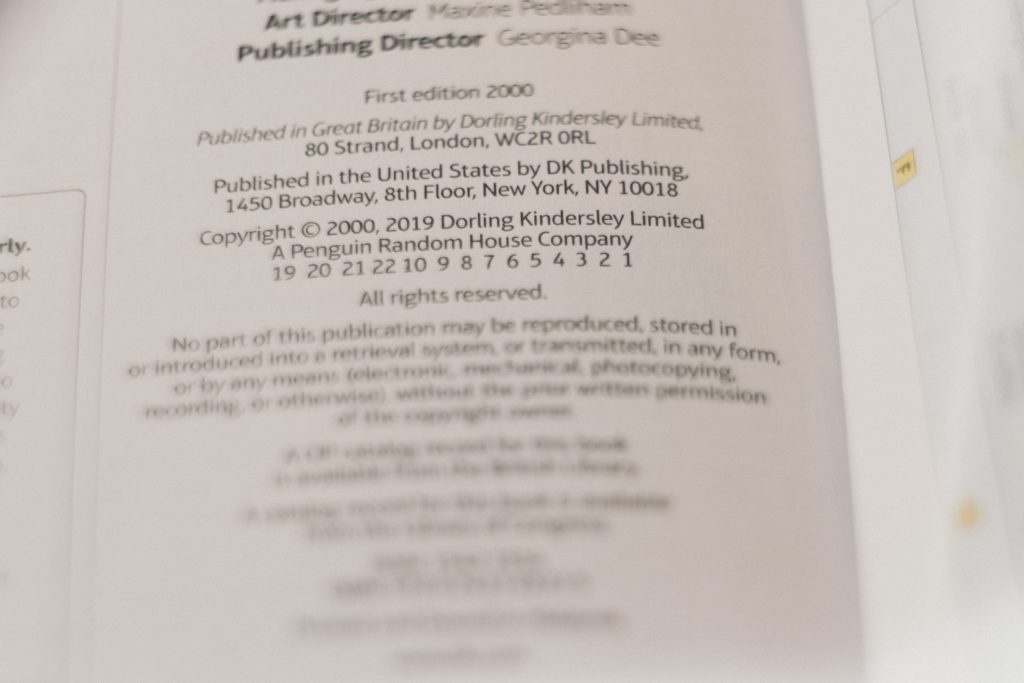
Check the publication date. Guidebooks are usually updated every 2 – 4 years, so if it’s possible you want to make sure the guidebook is as updated as possible.
In Japan, many things can change in 2 – 4 years, and the last thing you want to happen is to rely on an old guide book’s information, only to realize it’s out of date when you get to Japan.
With that said, getting a guide book with the most recent publication date isn’t the most important thing with ALL guide books.
There are some guide books we will cover like “Cool Japan: Fun in the Land of Manga, Lucky Cats and Ramen which are created in a comic book style and give more of an overview into the culture and overall experiences you will run into versus very detailed information.
Make Sure it Fits Your Travel Style

As I mentioned already, each Japan travel guide book is created and written for a different audience, so you want to make sure the guide book fits with your trip. Some guide books will cover the entire country of Japan, while others will focus solely on Tokyo and its surrounding area.
Additionally, the Japan guide books we will cover are further divided into the budget of the trip.
If you’re a more budget-conscious traveler and want to save as much money as possible when you go to Japan, the Super Cheap Guides series might be a great fit for you.
On the other hand, if you want to splurge now and then during your trip and you have a more flexible budget than guide books from Lonely Planet, Frommers, and DK Eyewitness will give you multiple budget options.
It is Written by Local Writers or Writers with Deep Knowledge

Check out the author’s bio pages to make sure they are either local writers or writers with deep knowledge of the destination the guide book is about. When you hire a tour guide, you would never want to go with a tour guide who isn’t familiar with the area, right?
The same thing applies to travel guide books. There is a huge difference in the quality of the information between a person who has just researched a destination online versus one who has lived and breathed the culture.
Visual Style, Quality Photographs, Hand Drawn Illustrations and More

Are you more of a visual learner or like to look at pictures of a destination before going?
If so, a guide book that contains beautiful photos, hand-drawn illustrations of museums and shrines, and large street maps might be a better fit for you. National Geographic and DK/Eyewitness guide books are known for their visual styling.
Just keep in mind that sometimes there is a tradeoff between more detailed “off the beaten path” type of information and more pictures, maps, and cut-aways.
Hard Copy or Digital Copy or Both
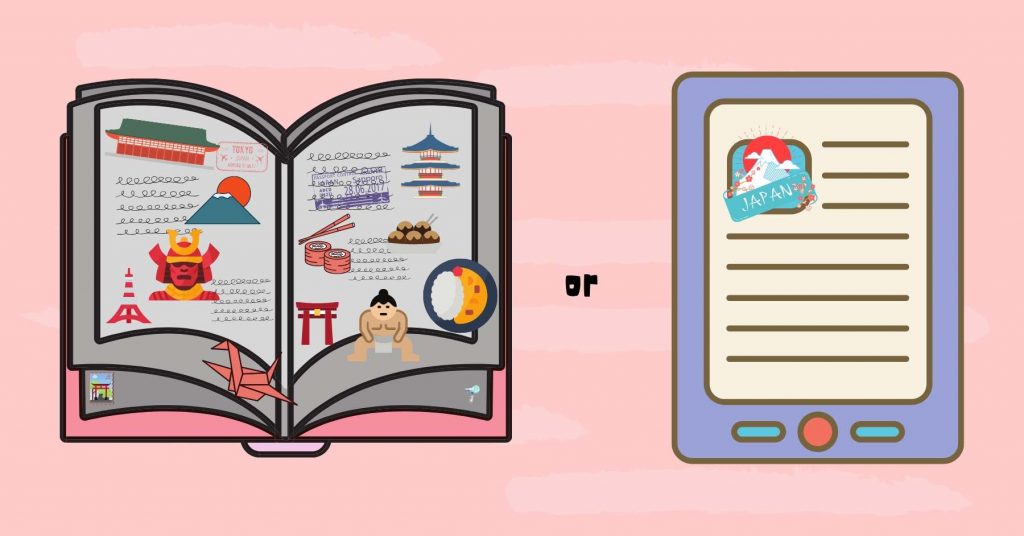
If you have the budget, it might be a good idea to buy the hard copy and digital version of the guide book.
The hard copy version is good for making notes in the pages, bookmarking, and keeping it as a souvenir.
The digital version is nice to have as you can easily search the entire book quickly and you don’t have to worry about carrying a book around. Some digital versions like the Lonely Planet Japan Travel Guide have special features like map links and downloaded maps.
Conclusion

There you have it! My 10 favorite Japan travel guide books. I hope this information was useful and that it helps you find the perfect guide book for your trip to Japan.
Obviously, I was not able to cover all the Japan guide books out there, so if you didn’t find what you were looking for, check out Amazon as there are many more to choose from. What I will say is that I think the 10 guide books here are great starting points, especially if this is your first time to Japan.
If you’re looking for some free additional resources to help you start planning for Japan, don’t forget to check out our 100 Interesting Facts About Japan and 101 Things to Do in Japan Bucket List for some ideas!
What Japan guide book did you end up going with?

